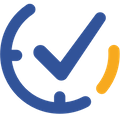Have you ever felt overwhelmed by your never-ending to-do list? What if I told you that focusing on just 20% of your tasks could yield 80% of your results? Welcome to the world of the 80/20 Rule, also known as the Pareto Principle. In this blog post, we’ll dive deep into how this powerful concept can revolutionize your productivity and help you achieve more with less effort.
Understanding the 80/20 Rule
The 80/20 Rule, named after Italian economist Vilfredo Pareto, suggests that roughly 80% of effects come from 20% of causes. Pareto first observed this principle in the early 20th century when he noticed that 80% of Italy’s wealth was owned by 20% of the population. But don’t get hung up on the exact numbers – the key is recognizing the significant imbalance between input and output.
This principle has since been applied to various fields, from business and economics to personal development and time management. Let’s look at some real-life examples:
1. Business: 80% of profits often come from 20% of customers
2. Sales: 80% of sales typically come from 20% of products
3. Time management: 80% of your work results may come from 20% of your time spent
4. Project management: 80% of project value is achieved with the first 20% of effort
5. Gardening: 80% of your produce might come from 20% of your plants
Applying the 80/20 Rule to Boost Productivity
Now that we understand the concept, let’s explore how to apply it to skyrocket your productivity:
1. Identify Your High-Impact Tasks
The first step is recognizing which activities contribute most to your desired outcomes. Here’s how:
Tip: Use a productivity journal for a week to track your tasks and their outcomes.
– List all your regular activities, both personal and professional
– Analyze which ones contribute most to your goals
– Highlight the top 20% that drive the majority of your results
For example, if you’re a content creator, you might find that certain types of posts or topics generate the most engagement. Focus on creating more of this high-impact content.
2. Prioritize Ruthlessly
Once you’ve identified your high-impact tasks, it’s time to prioritize them in your daily schedule.
Tip: Use the Eisenhower Matrix to categorize tasks by urgency and importance.
– Focus on tasks that fall into the “important but not urgent” quadrant
– Delegate or eliminate low-impact activities
– Schedule your high-impact tasks during your peak energy hours
Remember, saying “no” to less important tasks is saying “yes” to your priorities.
3. Simplify Your Workload
Streamlining your processes can help you focus more on what truly matters.
– Streamline processes by eliminating unnecessary steps
– Automate repetitive tasks where possible (e.g., use email filters or social media scheduling tools)
– Focus on projects that align closely with your goals
– Regularly review and cull your commitments
4. Concentrate Your Efforts
Once you’ve identified and prioritized your high-impact tasks, it’s time to give them your full attention.
– Dedicate uninterrupted time blocks to your high-impact activities
– Minimize distractions during these focused sessions (turn off notifications, find a quiet space)
– Take short breaks to recharge between intense work periods
– Use tools like website blockers to avoid time-wasting sites during work hours

The 80/20 Rule in Decision-Making
The Pareto Principle isn’t just for task management; it can also be a powerful tool for problem-solving and decision-making. Here’s how to apply it:
1. Analyze the Problem
– Break down complex issues into smaller components
– Identify the root causes of the problem
– Gather data to understand the full scope of the issue
2. Find the Vital Few
– Determine which 20% of factors contribute to 80% of the problem
– Focus on addressing these critical elements first
– Use tools like Pareto charts or cause-and-effect diagrams to visualize the data
3. Allocate Resources Wisely
– Direct your time, energy, and resources to tackle the most impactful factors
– Resist the urge to spread your efforts too thin
– Consider the return on investment for each potential solution
4. Monitor and Adjust
– Regularly assess the effectiveness of your solutions
– Be prepared to shift focus if the critical factors change
– Use key performance indicators (KPIs) to track progress

Limitations of the 80/20 Rule
While the Pareto Principle is a powerful tool, it’s important to understand its limitations:
1. Oversimplification Risk
– Don’t ignore the remaining 80% entirely; they may still be important
– Remember that some situations require a more nuanced approach
– Be cautious of creating blind spots by focusing too narrowly
2. Changing Dynamics
– In fast-paced environments, the critical 20% may shift rapidly
– Stay flexible and reassess your priorities regularly
– Use data and feedback to stay updated on what’s most impactful
3. Not Universally Applicable
– Some scenarios require equal attention to all components
– Use the 80/20 Rule as a guide, not a strict rule
– Be prepared to adjust your approach based on the specific context
4. Potential for Missed Opportunities
– Focusing solely on the top 20% might lead to overlooking emerging trends or untapped potential in the remaining 80%
– Balance exploitation of known high-impact areas with exploration of new possibilities
Implementing the 80/20 Rule in Your Life
Ready to put the Pareto Principle into action? Here are some steps to get started:
1. Choose an Area of Focus: Select one aspect of your life or work where you want to improve efficiency.
2. Gather Data: Spend a week or two tracking your activities, results, and time allocation in this area.
3. Analyze: Identify the 20% of inputs that are producing 80% of your desired outcomes.
4. Create an Action Plan: Develop strategies to increase focus on your high-impact activities and reduce time spent on less impactful tasks.
5. Experiment and Iterate: Implement your plan, monitor the results, and adjust as necessary.
6. Expand: Once you’ve successfully applied the 80/20 Rule in one area, gradually expand to other aspects of your life and work.
The 80/20 Rule offers a powerful lens through which to view your work and life. By focusing on the vital few tasks that drive the majority of your results, you can dramatically increase your productivity and effectiveness. To apply this principle flexibly, always keeping an eye on the bigger picture and remaining open to new opportunities.




